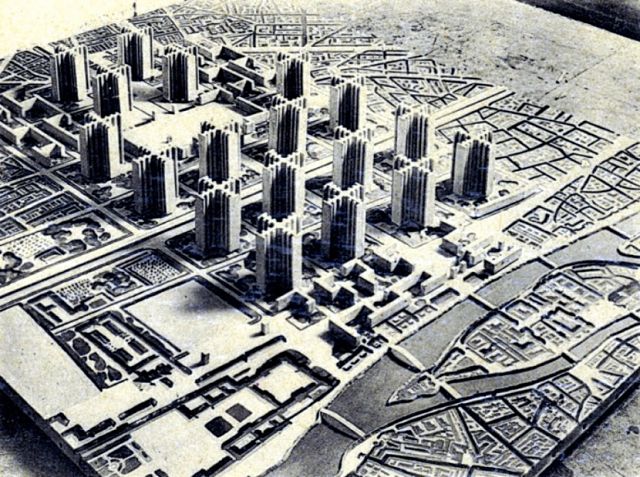 Picture of Benito Mussolini and Fascist Blackshirt youth in 1935 in Rome. (The American Conservative)
Picture of Benito Mussolini and Fascist Blackshirt youth in 1935 in Rome. (The American Conservative)
By JONATHAN COPPAGE
When Mussolini’s army invaded and ultimately occupied Ethiopia, the Italian fascists did more than expand Italy’s African empire; in their eyes, they obtained an opportunity to build a capital from scratch.
As Rixt Woudstra details at Failed Architecture,
The idea of Ethiopia as a tabula rasa — a blank slate — was omnipresent in the writings of architects and urban planners occupied with the designs of the colonial capital between 1936 and 1939, who considered the country devoid of any structures of architectural significance. Contrary to the fascination of Libyan whitewashed courtyard house – their simplicity, colours and volumes perfectly in tune with modern taste – the round houses of the Ethiopians were regarded by Italian architects as irrational and unhygienic.
Modernist architecture’s obsession with rationality and supreme planning looked askance at a city even as relatively new as Addis Ababa for not proceeding out of the geometries and ideals en vogue in Europe. Within months of the Ethiopian capital’s conquest, no less an architect than Le Corbusier, one of the icons and pioneers of modernism, composed a sketch to accompany a letter he sent to Mussolini instructing “how a city for the modern times is born,” and offering his services as a midwife.
Woudstra writes,
Le Corbusier’s sketch shows Addis Ababa literally as a tabula rasa: the rigorously superimposed plan cleared the land of all signs of humanity and centuries of urban culture. In his letter, Le Corbusier described his drawing perfectly by writing that he was attracted by ‘…models so severe, that one might think the colony was a space without time, and therefore, without history, and without any particular geographical meaning.’ Further in his letter he added: ‘…the city is direct dominion; the city becomes the city of government, in which the Palace of the Governor must stand overall…’
As Robare explained the other week, these grand rational plannings have not died with their blackshirted allies. China’s construction of cities out of whole cloth may sometimes be painted with green sustainability, but they neither have the human appeal nor the natural sustainability of an incrementally grown, walkable city.
Addis Ababa was spared a Corbusier-inspired revamp by a combination of bureaucratic foot-dragging and rapid British troop movements that eventually freed the capital from fascist control. The grand colonialism would proceed apace, however, back in the very Western countries that had previously so frustrated Corbusier and his followers.

Plan Voisin for Paris, 1922-1925. photo: Fondation Le Corbusier
Read more »
—
Join the conversation on Twitter and Facebook.

























